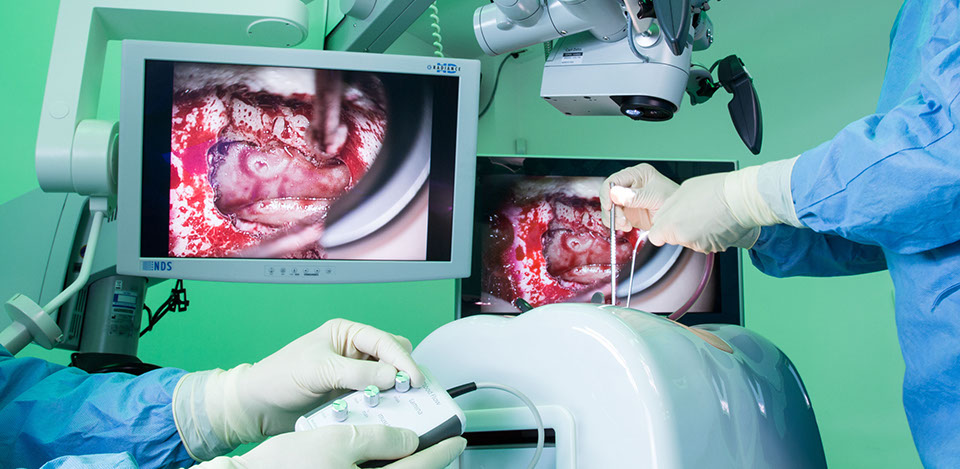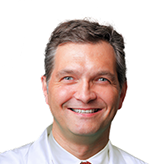
00:00
00:00
Roger Härtl
The Davos Courses have always offered the most up-to-date, innovative educational programs. The 2016 course edition was no different. For the first time, the Advanced Level Simulated Bioskills course, chaired by North America Regional Educator of the Year-Award winner Roger Härtl, was staged.
High Fidelity Surgical Simulation Training – Pioneering MIS Technique Education in Davos

At the course, 30 participants from 14 countries had the unique opportunity to experience Roger Härtl and his team, consisting of Luca Papavero (Educational Advisor, Germany), and faculty members Harry Gebhard (Switzerland), Andreas Korge (Germany), Avelinio Parajon (Spain), and Steven Theiss (USA) in action. The team taught MIS techniques and the use of the microscope on high fidelity spine simulators—a true novelty and innovation in spine surgery training.
"The simulator is incredibly real. The instructors are excellent, and it was a fantastic experience." Kharrat Khalil, Lebanon






Simulator Introduction via 3D screen: Course Chairperson Roger Härtl (USA) and participants
Faculty member Harry Gebhard (Switzerland) with participants
Course Chairperson Roger Härtl with course participant Marius du Preez
From left to right: The Course Faculty: Luca Papavero (Educational Advisor), Avelino Parajon, Steven Theiss, Andreas Korge, Harry Gebhard, Roger Härtl (Chairperson)
Faculty members Steven Theiss (USA) and Andreas Korge (Germany)
Faculty Member Avelino Parajon (Spain) with a course participant
3 - 6
<
>
Revolutionizing Minimally Invasive Spine Surgery training
The course participants trained in procedures including decompression of spinal stenosis, facetectomy, cage placement and complications management, and navigated MIS TLIF hands-on on the simulator by using original operating instruments. Participant feedback was, without exception, extremely positive.
To many of them, the lifelike haptic of the simulator, with anatomical structures, muscle tissues, bone, the dura, and the ligamentum flavum, including an intraoperative bleeding system that can be adjusted manually to change the operating condition, was a huge surprise. Course participant Casey Davidson from the US commented: "The simulation is much more realistic than I would have ever imagined. It really feels like operating on a real patient. I am surprised and absolutely fascinated."
Faculty member Steven Theiss added: "Anybody that hasn't worked with the simulators cannot image how real they are. I've been involved in surgical education for many years with residents and fellows and I haven't seen anything as realistic as this."
"It was a great experience. I don't have much experience with MIS techniques; hence it was great to be able to practice the microscope and the MIS techniques on the simulator. It really feels like operating on a real patient." Marius du Preez, South Africa
At present, surgical simulators are mostly used as supplementary training experiences rather than primary educational tools. However, with the continuous emphasis on patient safety and costs in health care, it is evident that surgeons will have to learn procedures outside of the OR in the future. Robust supplementary training methods, to bridge the educational gap, will become more important than ever. But it's also the simulator technology that has improved massively in the last few years, offering great opportunities for surgical education.
The surgeon's cockpit
Faculty member Harry Gebhard shares: "With rapid advances in technology, surgical simulation has enormous potential and seems poised to revolutionize training in the future. Just like pilots in their simulator training, we are now able to teach MIS techniques and practice parts of procedures, with many steps required in real surgery, including complications or bleeding, under standardized, and close to lifelike conditions. This is in certain aspects limited with live tissue from anatomical specimen. Another benefit is that simulators can be used with fewer restrictions in terms of location or hygiene. Thus, they are ideal for cost-effective high fidelity procedure training. These circumstances will be beneficial to the surgical education at a broader level worldwide."
But these are not the only benefits. Practicing surgical skills on a simulator also allow for detailed feedback and objective assessment of performance of the surgeons.
Course chair Roger Härtl states: "In a simulator, the surgeons are exposed to a totally reproducible situation. We are able to measure the progress as well as the teaching success. It's also possible to change the pathology and teach the decompression of a lumbar stenosis at basic level, and then increase the level of complexity by adding a deformity component."
The future of surgical simulation
The challenges revolve around understanding the value of this technology, and to develop a curriculum that incorporates the simulator as an educational tool.
Härtl shares: "The simulator adds another dimension to surgical education. The goal now is to define a curriculum and certain standard procedures eg, what are the steps for a basic MIS TLIF operation. We've known the detailed steps, but now are able to train them in an organized fashion. We want to get to a point where we are able to quantify the success in terms of timing and the completeness of steps on the simulator, thus defining best standard practices and teach them worldwide. "
In Davos, Härtl and his team delivered a 360 degree educational experience for the participants, including hands-on sessions and case discussions, as well as pre-course online reading, videos, and discussion forums.
How the simulator was developed
The idea of developing the RealSpine simulation system was created in 2010 at Innovative Surgical Training Technologies (ISTT) at the Leipzig University of Applied Sciences (HTWK Leipzig) in Leipzig, Germany. In 2012, after an intensive cooperation between medical doctors and engineers, the first prototype was presented. The simulator has since been steadily improved over the years and extended with additional components.
Andreas Korge, who was part of the course faculty, and who has been closely involved in the development of the simulator shares: "We have been practicing MIS techniques in our hospital in Munich since 1998, and have tried to pass on this knowledge whenever possible. Hence, when we were approached by the CEO of RealSpine, Werner Korb, we were very open to sharing our MIS experiences. As a result, a prototype of the simulator was shown at one of the Advanced Microsurgery Courses. Since then Professor H. Michael Mayer and I have supported the development of the simulator. It's great to see that we are finally able to disconnect the surgical training from cadavers, to standardize the procedures, and to reach a high level of operational expertise regardless of the number of patients treated. I am convinced that we will move increasingly away from cadaver labs and towards more realistic, safer and cleaner, and cost-effective techniques to train surgeons."
__________
Roger Härtl, Chairperson of the Advanced Level Simulated Bioskills Course on the new educational highlight. Roger Härtl is Professor of Neurological Surgery, Director of Spinal Surgery and Director of Weill Cornell Medicine Center of Comprehensive Spine Care in New York, USA.
